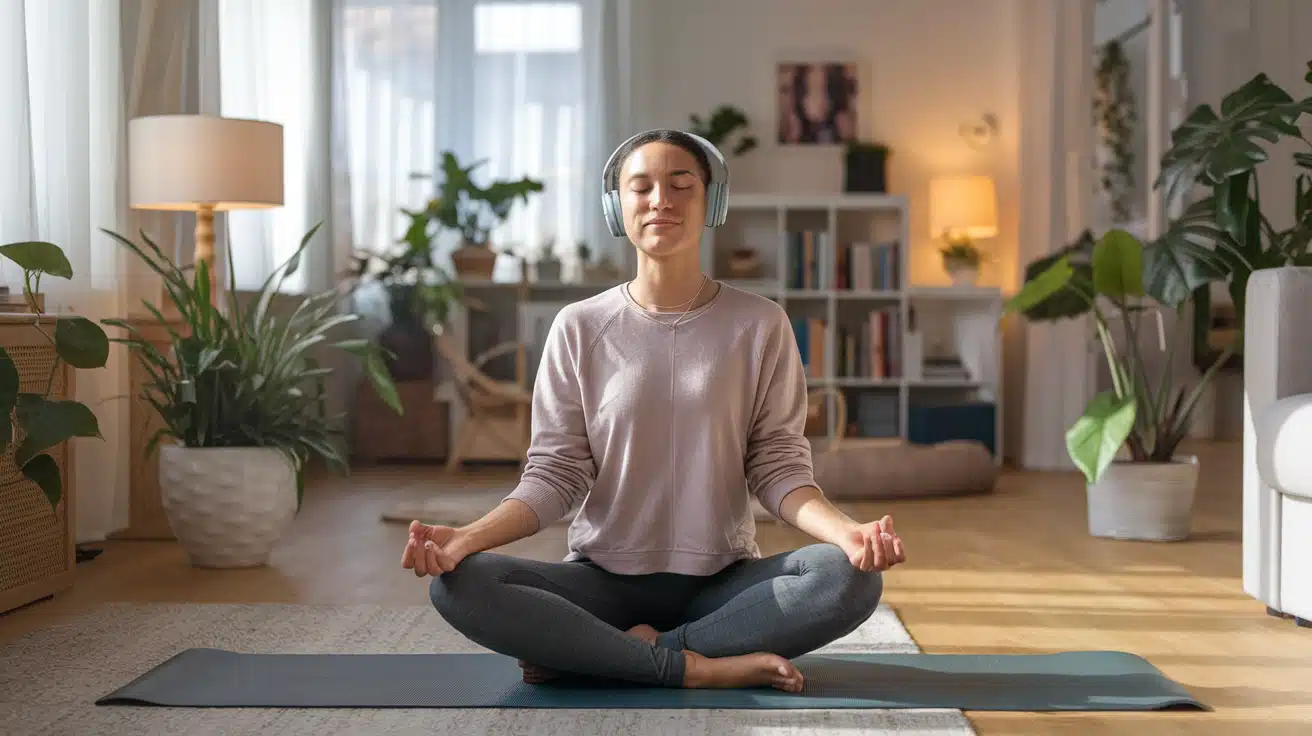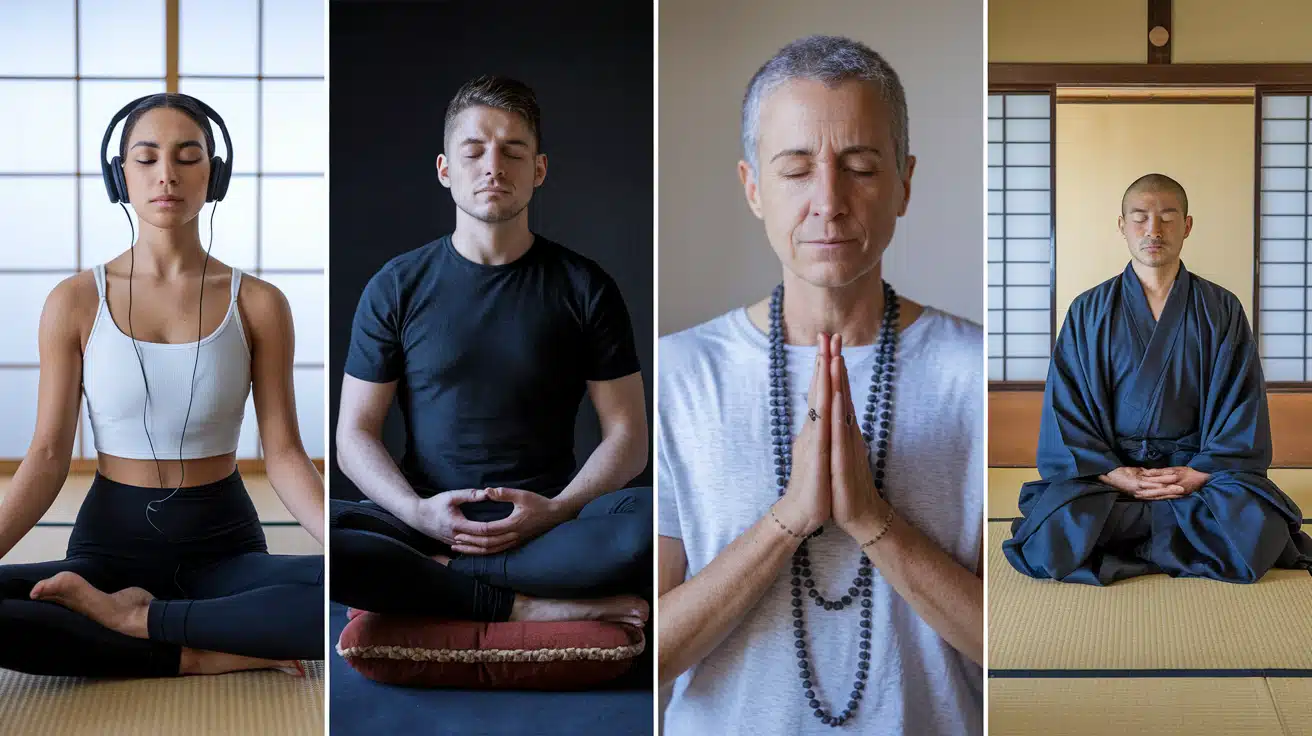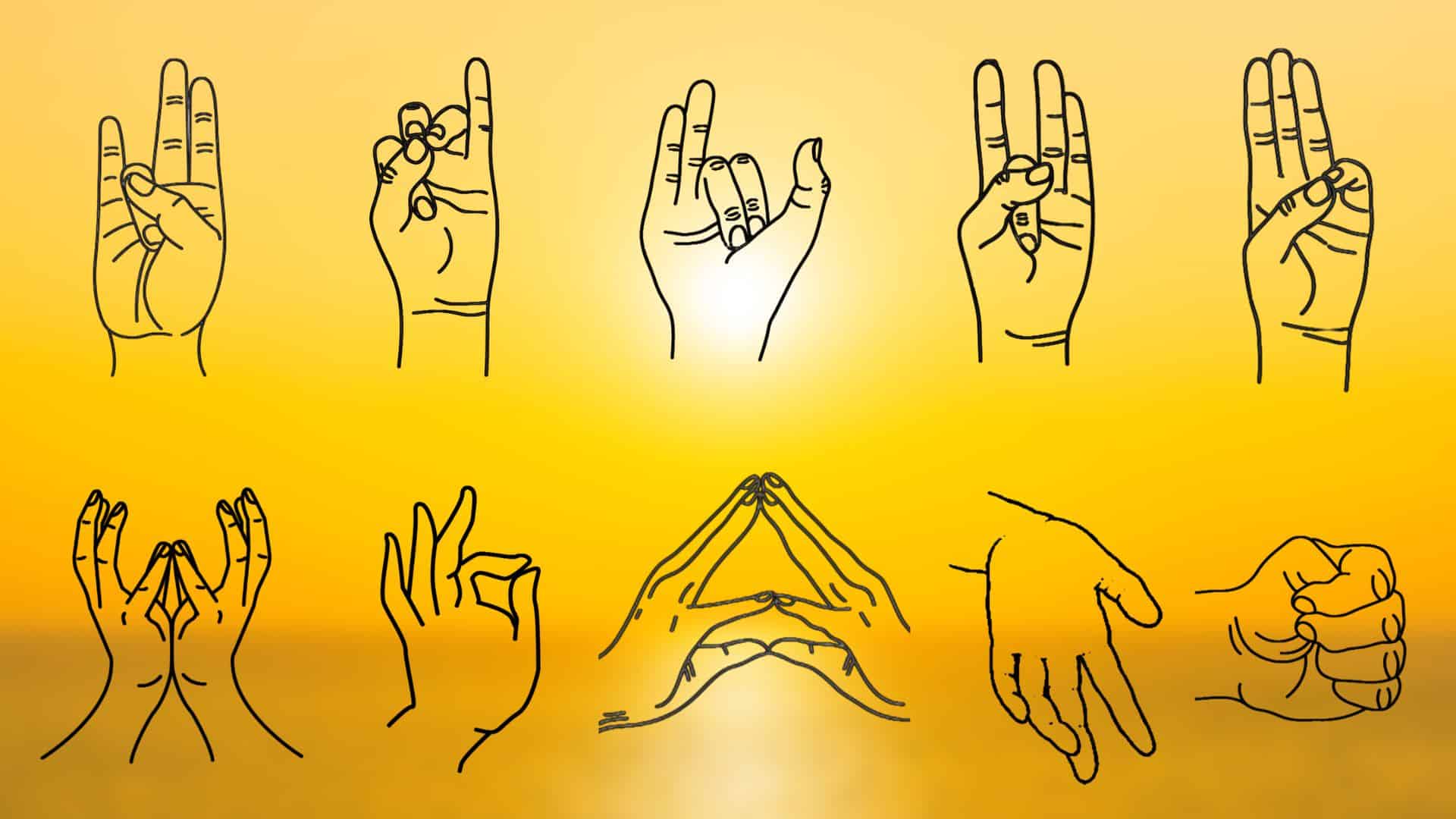Feeling stressed, scattered, or stuck in a cycle of worry?
Your racing mind makes it hard to focus, sleep, or simply enjoy the moment. You’ve heard meditation helps, but sitting in silence feels impossible when your thoughts won’t quit.
What if someone could guide you step-by-step into a calm state? Guided meditation offers exactly that – a gentle voice leading you through relaxation techniques that actually work. No guesswork, no struggle with wandering thoughts.
This practice can change your stress into peace, your restless nights into deep sleep, and your scattered focus into clear thinking.
Ready to learn what guided meditation is and how it can change your life? Let’s explore this beginner-friendly path to inner peace.
What Is Guided Meditation?
Guided meditation is when a teacher, app, or recording leads you through a meditation session with clear, soothing instructions.
Think of it as a coach helping you relax your mind. You may be instructed to focus on your breath, visualize a peaceful place, or release tension in your body.
Unlike solo meditation, where you’re left to figure it out, guided meditation keeps you on track, making it perfect for newbies or anyone who struggles to stay focused.
How Does It Differ from Other Meditation Types?
Wondering how guided meditation stacks up against other types? Here’s the deal:
-
Guided Meditation: A voice guides you through instructions, such as breathing cues or visualizations. It’s structured and easy to follow.
-
Unguided/Silent Meditation: You meditate on your own, focusing on breath or a mantra without external help. It’s tougher for beginners.
-
Transcendental Meditation: Uses a specific mantra you repeat silently. It’s more formal and often requires training.
-
Zen Meditation: Focuses on sitting in stillness with intense concentration, often in a specific posture.
Guided meditation is like having a buddy to keep you grounded, while other types lean on self-discipline. It’s the go-to for anyone starting out.
The Science Behind Guided Meditation
Research from places like UCLA Health and the Mayo Clinic shows guided meditation does some pretty cool things for your brain and body.
It activates your relaxation response, cutting down on cortisol (that pesky stress hormone) and boosting feel-good chemicals like serotonin.
Regular practice can improve focus, emotional resilience, and even sleep quality. It’s not just feel-good vibes; it’s a legit way to rewire your brain for calm.
Who Can Benefit from Guided Meditation?
|
Who It’s For |
How It Helps |
|---|---|
|
Busy Professionals |
Reduces work stress and boosts focus for better productivity. |
|
Students |
Improves concentration and eases exam anxiety. |
|
Parents |
Offers quick relaxation during hectic schedules. |
|
Seniors |
Enhances sleep and emotional well-being. |
|
Kids |
Short, fun sessions help with focus and calming big emotions. |
|
Anyone with Anxiety |
Soothes racing thoughts and promotes emotional balance. |
Basically, if you’ve got a brain, guided meditation can help. It’s flexible and fits into any lifestyle, no matter your age or schedule.
How to Practice Guided Meditation Like a Pro
Ready to try it? Here’s a straightforward way to get going:
-
Find a Quiet Spot: Pick a cozy place; your bedroom, a park, or even your car.
-
Get Comfy: Sit or lie down. Whatever feels relaxed is perfect.
-
Choose a Guide: Use an app like Headspace, a YouTube video, or a podcast. Find a voice you vibe with.
-
Start Short: Try 5-10 minutes to begin. You can go longer later.
-
Follow Along: Listen to the guide’s cues; breathe deeply, imagine a calm scene, or relax your muscles.
-
Don’t Sweat Wandering Thoughts: Your mind will drift. Just gently refocus on the guide’s voice.
Try doing it at the same time each day, like first thing in the morning or before bed, to make it a habit.
Common Guided Meditation Techniques
Here’s a rundown of popular techniques you’ll find in guided sessions:
-
Breath Awareness: Focus on slow, deep breaths to anchor your mind and calm nerves.
-
Body Scan: Mentally check each body part to release tension—great for stress relief.
-
Visualization: Picture a peaceful place, like a beach or mountain, to boost relaxation.
-
Mantra-Based: Repeat a word or phrase (like “calm” or “peace”) to stay focused.
-
Loving-Kindness (Metta): Send kind thoughts to yourself and others to build positivity.
Each one’s a little different, so try a few to see what feels right.
Sample Guided Meditation Script
Want to test the waters? Here’s a quick 5-minute script you can read yourself or have a friend read to you:
Find a comfy spot and close your eyes. Take a slow, deep breath in through your nose… hold it for a moment… and exhale through your mouth. Feel your shoulders soften. Imagine a warm, golden light flowing from your head down to your toes, relaxing every muscle. If thoughts pop up, let them drift away like clouds. Focus on your breath—slow and steady. In… and out. Stay here for a minute, just breathing and letting go.
You can find longer scripts online or tweak this one to suit your vibe.
Types of Guided Meditation for Every Goal
Guided meditation comes in all sorts of flavors. Here’s a table to help you pick the right one:
|
Type |
Best For |
What It Does |
|---|---|---|
|
Mindfulness Meditation |
Daily stress relief |
Keeps you present and focused on the moment. |
|
Loving-Kindness (Metta) |
Building self-compassion |
Boosts positive emotions and kindness. |
|
Sleep Meditation |
Insomnia or restless nights |
Guides you into deep relaxation for better sleep. |
|
Stress Relief Meditation |
Anxiety or high-pressure moments |
Calms racing thoughts and soothes nerves. |
|
Yoga Nidra |
Full-body relaxation |
Combines meditation with gentle yoga vibes. |
|
Creativity Meditation |
Boosting inspiration |
Sparks creative thinking through guided imagery. |
There are also super-specific ones, like meditations for pain relief or confidence. Search for what matches your needs.
Overcoming Common Meditation Challenges
Starting something new can feel tricky. Here’s how to tackle common hiccups:
-
Wandering Mind: It’s normal for thoughts to drift. Gently bring your focus back to the guide’s voice.
-
No Time: Even 5 minutes counts. Try it during a lunch break or while waiting for coffee.
-
Feeling Restless: Start with short sessions or try a guided walking meditation.
-
Not Sure It’s Working: Look for small wins, like feeling calmer or sleeping better. Progress builds over time.
Be kind to yourself; it’s a skill that gets easier with practice.
Best Resources for Guided Meditation
No need to hunt around. Here are top-notch places to find guided meditations:
- Apps: Headspace, Calm, and Insight Timer have free and paid options. They’re easy to navigate and great for daily use.
- YouTube Channels: The Honest Guys, Michael Sealey, and Great Meditation offer free, high-quality sessions.
- Podcasts: Search “guided meditation” on Spotify. UCLA Health’s website has free, expert-backed recordings.
- Books: The Headspace Guide to Meditation by Andy Puddicombe or Mindfulness for Beginnersby Jon Kabat-Zinn dive deeper.
- Online Courses: Check Udemy or Coursera for beginner-friendly meditation courses.
Start with free stuff to find your groove, then explore paid options for more variety.
Disclaimer: These resources are for informational purposes only. We are not affiliated with any mentioned books, websites, or services. Consult a healthcare professional before making dietary changes.
Making Guided Meditation a Daily Habit

Want to make guided meditation a regular part of your life?
It’s easier than you think, and you don’t need to be perfect to see the benefits. Pick a consistent time that works for you.
Mornings can set a calm tone for the day, while evenings help you unwind before bed. Create a cozy meditation spot, maybe with a cushion or chair, so you’re ready to relax.
Set a phone reminder or link your practice to an existing habit, like right after brushing your teeth. Keep track of how you feel after each session to stay motivated.
It’s amazing to notice small changes like better sleep or less stress. To avoid boredom, mix things up by trying different guides or styles, like switching between mindfulness and sleep meditations. If you miss a day, no worries! Just jump back in.
Consistency matters more than perfection, and even a few minutes a day can make a big difference.
Guided Meditation for Specific Needs
Need something tailored? Try these:
-
For Anxiety: Short, breath-focused sessions to calm racing thoughts.
-
For Sleep: “Bedtime relaxation” or “sleep meditation” guides for better rest.
-
For Focus: Mindfulness or mantra sessions to sharpen concentration.
-
For Self-Love: Loving-kindness meditations to boost confidence and positivity.
-
For Kids: Fun, short sessions with imagery (like imagining a superhero) to keep them engaged.
Search apps or YouTube for these specific types to match your goals.
The Bottom Line
Guided meditation isn’t just another wellness trend – it’s a practical tool that fits into any lifestyle. From 5-minute morning sessions to bedtime relaxation, you now have the knowledge to start your own practice.
The research is clear: regular guided meditation reduces stress, improves sleep, and sharpens focus. But the real proof comes from trying it yourself. Notice how your body feels after just one session. Pay attention to your mood throughout the day.
What’s your next step? Download a meditation app, find a quiet corner, and commit to just five minutes today. Your future self – calmer, more focused, and better rested – will thank you.
Start small, stay consistent, and watch how this simple practice transforms your daily life. Your meditation journey begins with a single breath.









